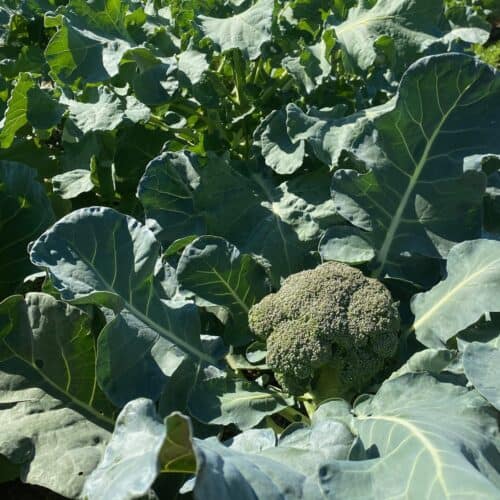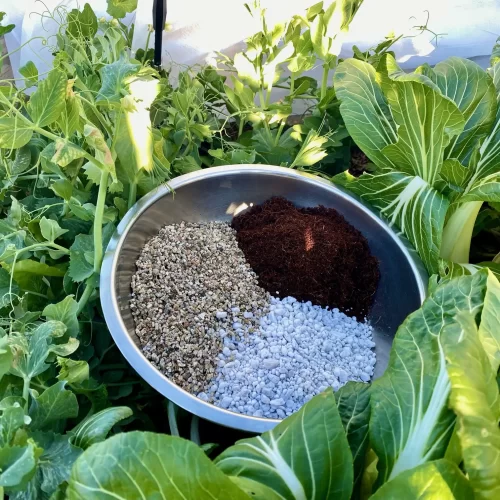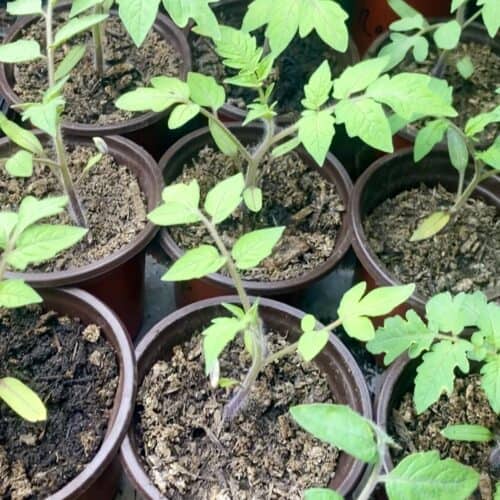This post provides easy steps to prepare the garden for winter!
Are you a new gardener and don’t know how to prepare the garden winter? Knowing what to do and how to prepare my garden for winter was one of the questions I had when I first started gardening. Within the first couple years I quickly learned what I considered the most important must do things before the first freeze hits.
Here are 5 simple steps to ensure your garden weathers the cold months ahead!

How To Prepare The Garden For Winter
1. Harvest Remaining Crops
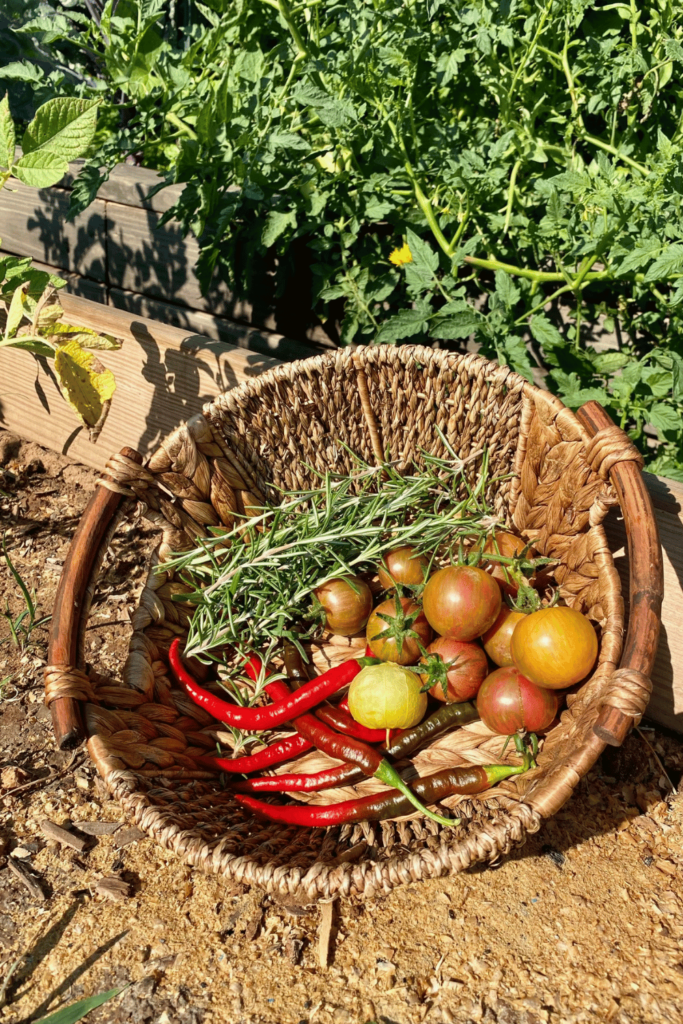
After putting in so much work throughout the spring and summer months we want to ensure we get the most we can out of the garden.
Before the first frost hits, it’s crucial to harvest any remaining crops. Collect all ripe vegetables and fruits, as frost can damage or ruin their quality. Don’t forget to gather herbs, as well!
If you have any frost tolerant crops those can remain in the beds for continued harvests.
{Related Post: 13 Frost Tolerant Vegetables to Keep Your Garden in a Flourishing Frenzy}
2. Garden Bed Cleanup
Remove all unwanted weeds and grass from the garden. It is imperative to remove the weeds at the roots to prevent them from returning in the spring.
Any remaining annual crops should be cleared out to prevent disease and pests from taking hold. You can either completely pull the pant out or cut at soil level, leaving the roots to decompose and providing a food source for soil organisms.
Dispose of the weeds and diseased plants in the trash, while composting the rest. I will often mix the healthy plant matter into the soil.
3. Adequate Watering
Even in winter, hydration is key. Water your perennial plants deeply before the ground freezes. Though watering might feel counterintuitive, it’s essential to maintain root health during the dormant period.
It’s important to note that different plants have different watering requirements, so it’s best to understand the specific needs of the plants in your garden. Overwatering can be detrimental as well. The key is to have a balance by ensuring the soil is adequately moist but not waterlogged before the winter freeze sets in.
I will water no closer than a few days before an anticipated freeze. This allows enough time for the water to be absorbed by the soil and for the plants to take up the moisture.
4. Mulch For Protection
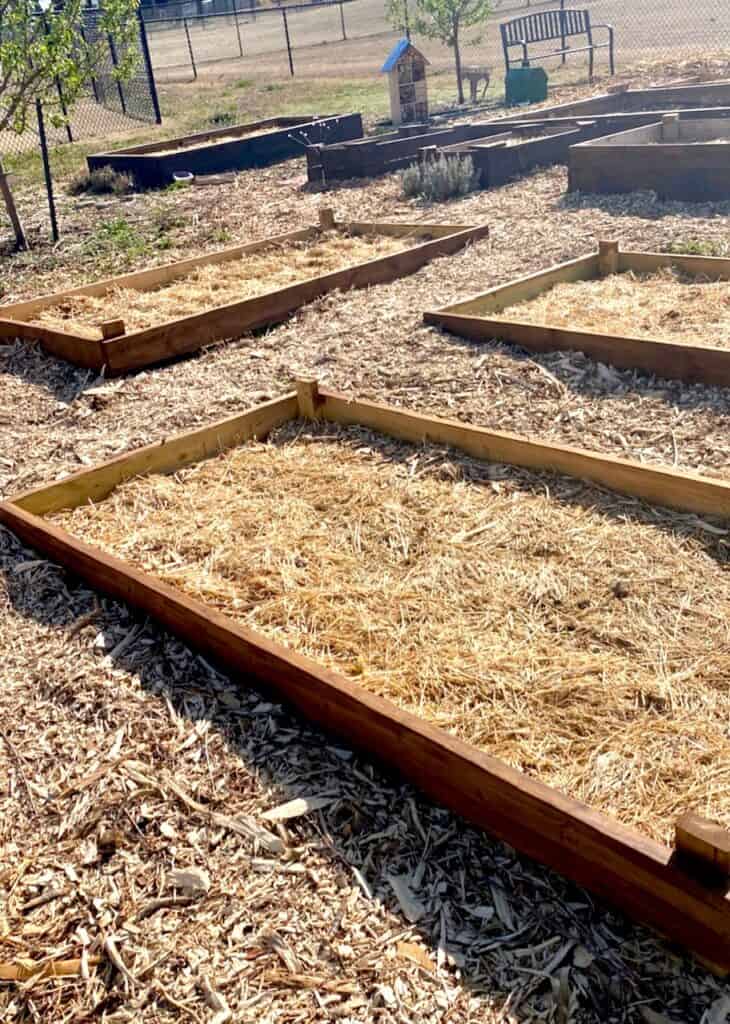
Mulching the garden beds creates an insulating layer that regulates soil temperature, prevents soil erosion, retains moisture, and shields roots from harsh freezes. Opt for organic mulches like straw, shredded leaves, or wood chips. They will enrich the soil as they decompose.
- Straw
- Straw is an inexpensive option and easily found in the fall. Disadvantages are straw can contain weed seeds and is easily blown away.
- Shredded Leaves
- Leaves are abundant in the fall and best of all FREE! A disadvantage of leaves are they can mat together to block oxygen and water infiltration.
- Wood Chips
- Wood chips provide a longer-lasting solution. A draw back is decomposition can tie up nitrogen temporarily so it is recommended to allow fresh wood chips to compost for a least 3-6 months before using in the garden. You can get free wood chips from ChipDrop!
Be sure to leave a few inches of space around the stems of your perennial plants and trees.
5. Preserve Your Tools
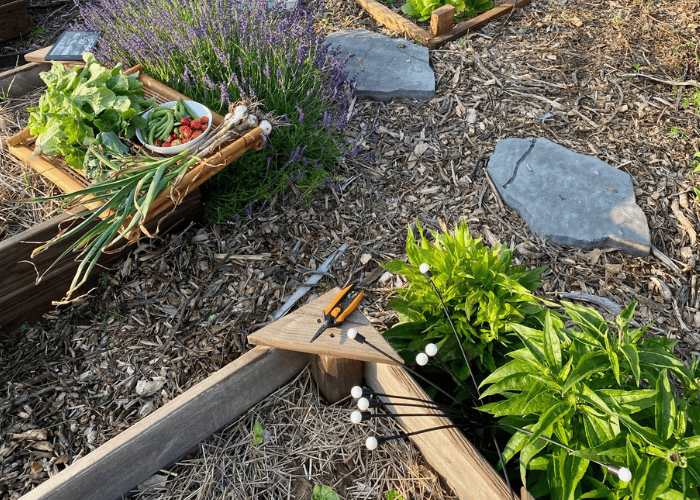
If you are anything like me you leave your garden tools all throughout the garden. This can cause rust, weakening of joints/connections, and dulling.
Before stowing your gardening tools away, give them a thorough cleaning, sharpening if needed, and a protective oiling. Doing the proper maintenance now ensures they’ll be ready for action when spring returns.
Rust Removal
- Wire Brushing or Steel Wool
- Use a wire brush or steel wool to scrub away surface rust. This method works well for light rust and can help prepare the surface for further treatment.
- After brushing, wipe the tool clean with a cloth to remove loose rust particles.
- Vinegar Soaking
- Fill a container large enough to submerge the tool with white vinegar.
- Submerge the rusted parts of the tool in the vinegar and let it soak for several hours or overnight.
- Use a scrubbing pad or wire brush to gently scrub away the loosened rust.
- Rinse the tool with water, dry it thoroughly, and apply a light coat of oil to prevent future rusting.
- Baking Soda Paste
- Make a paste by mixing baking soda with water until you have a thick consistency.
- Apply the paste to the rusted areas of the tool and let it sit for a few hours.
- Scrub the rusted areas with a scrubbing pad or brush.
- Rinse, dry, and oil the tool.
This Post was all about the best steps to prepare the garden for winter before the first frost hits.
Remember there is no one way to garden! You learn by growing and finding out what works for you!


